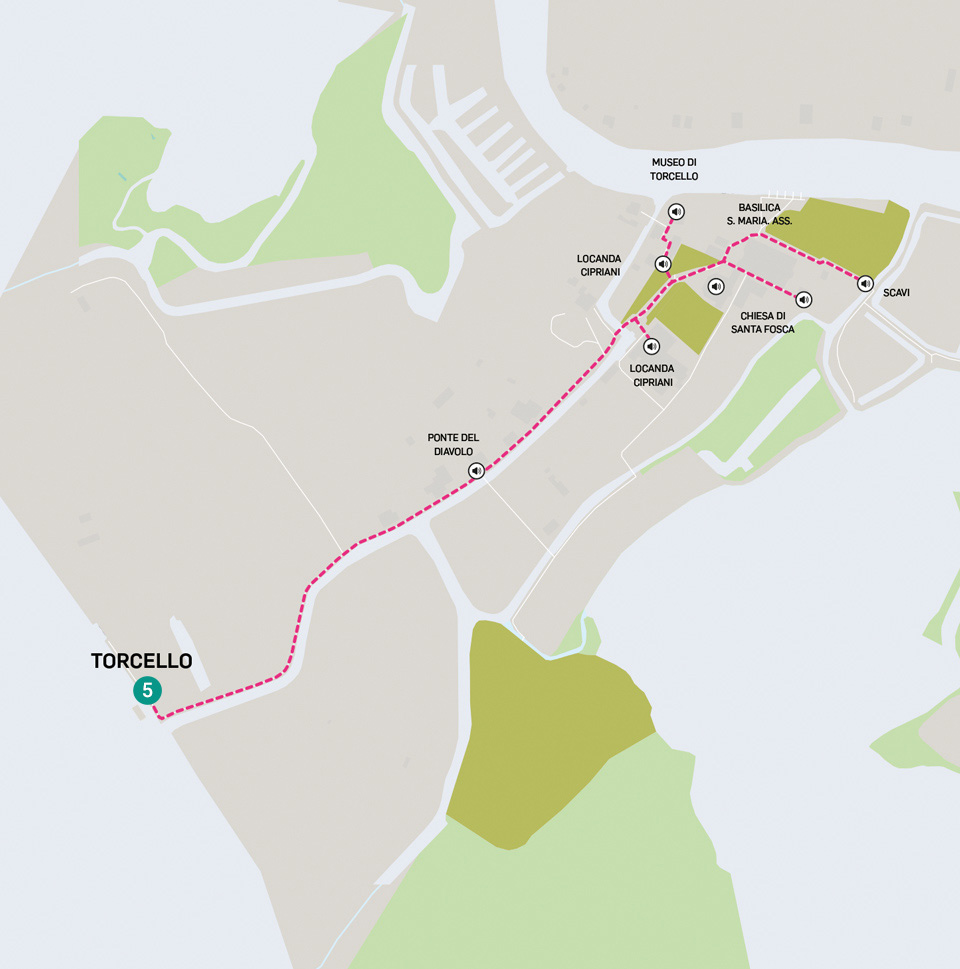Torcello: discover the lagoon’s most ancient island
All our experiences are included in the ticket!
Immerse yourself in the silence of Torcello, the island that is traditionally considered the oldest in the lagoon. In fact, its origin seems to date back to the fifth century AD when the populations of the glorious Altino fled here to escape the attack of the barbarian peoples on the mainland.
The island of Torcello will take you to a timeless dimension: walk along the only road present and immerse yourself in what was the cradle of Venice. On the way you will discover the legends surrounding the "Devil's Bridge" and get the chance to sit on "Attila's Throne". Finally, don't forget to visit the Basilica of Santa Maria Assunta, the first church built in the Venetian Lagoon.
This itinerary has been created by Silvia Zanella for Venetiana.
Immerse yourself in the silence of Torcello, the island that is traditionally considered the oldest in the lagoon. In fact, its origin seems to date back to the fifth century AD when the populations of the glorious Altino fled here to escape the attack of the barbarian peoples on the mainland.
The island of Torcello will take you to a timeless dimension: walk along the only road present and immerse yourself in what was the cradle of Venice. On the way you will discover the legends surrounding the "Devil's Bridge" and get the chance to sit on "Attila's Throne". Finally, don't forget to visit the Basilica of Santa Maria Assunta, the first church built in the Venetian Lagoon.
This itinerary has been created by Silvia Zanella for Venetiana.
Suggested itinerary:
Devil's Bridge
The first attraction you will come across during your Torcello tour is the Devil's Bridge, easily recognizable because it has no side railings. Two legends contend for the origin of the name; according to some the Devil built the bridge in just one night after a bet. Dawn came before the work was completed, which is why the railings are missing. The second legend instead tells that, during the Austrian domination in Venice, a young girl fell in love with an Austrian soldier. Her family killed him. The girl then turned to a sorceress who invoked the Devil, who revived the young man. The two lovers fled together, but the Devil asked the sorceress to give him the souls of children in exchange. The woman then promised the Devil that for seven years she would give him the soul of a child who had just died on the night of Christmas Eve. However, the witch died shortly after and could not honor her promise. For this reason even today it is said that the Devil crouches on Christmas Eve on the bridge with the appearance of a cat waiting for the souls of children.
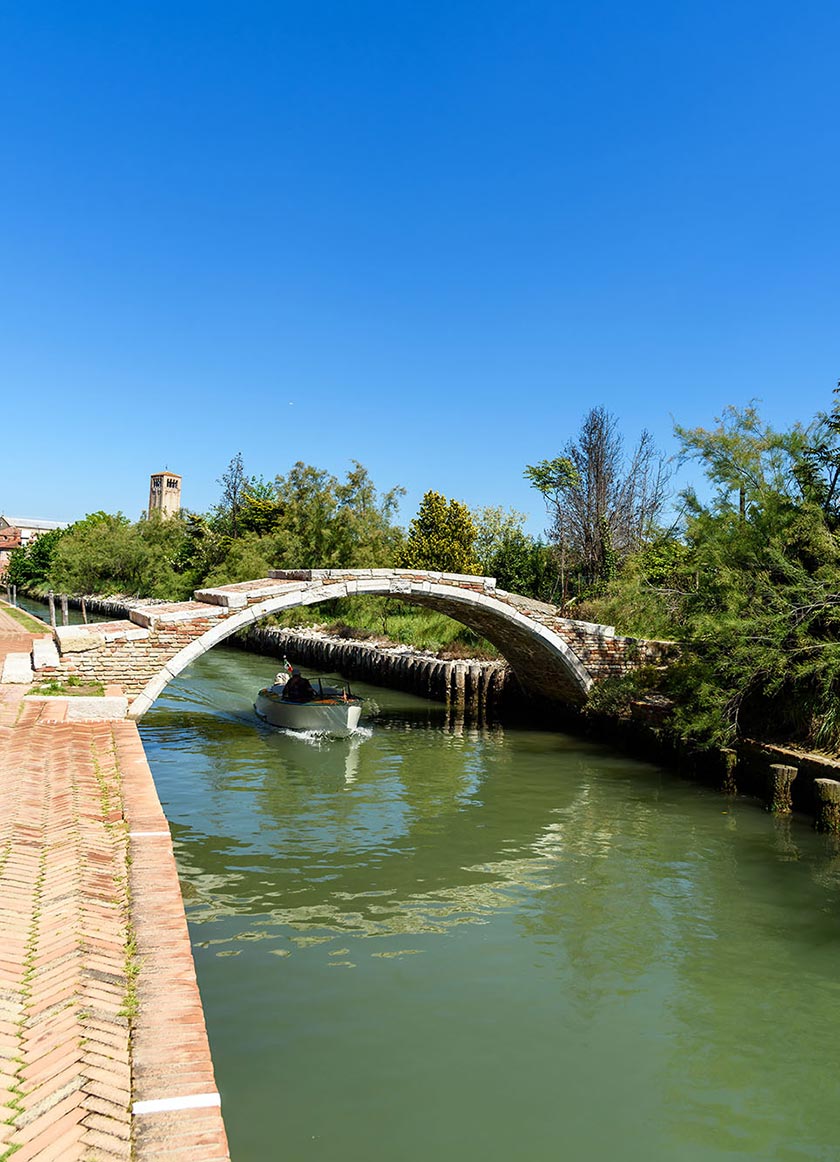
Torcello Square
Torcello Square is an open space covered with greenery and gravel that still retains the most evident traces of what Torcello was once upon a time. In fact, here are the main monuments of the island: the museums, once government buildings, the Church of Santa Fosca, the baptistery, the Cathedral of Santa Maria Assunta and the bell tower. In the space in front of the museums it is also possible to admire scattered marble fragments resulting from archaeological finds, including the remains of columns of disappeared buildings, coats of arms of ancient families and funerary steles.
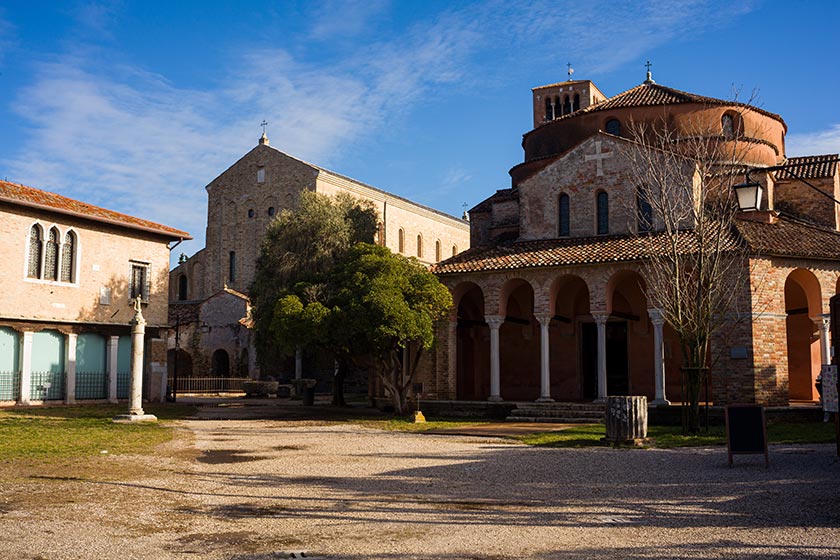
Attila's Throne
In front of Torcello Provincial Museum you will come across Attila's Throne, an armchair in Istrian stone. Attila never really managed to reach the island of Torcello, it is therefore thought that the throne belonged to the Bishop of the island and that it was originally located inside the cathedral.
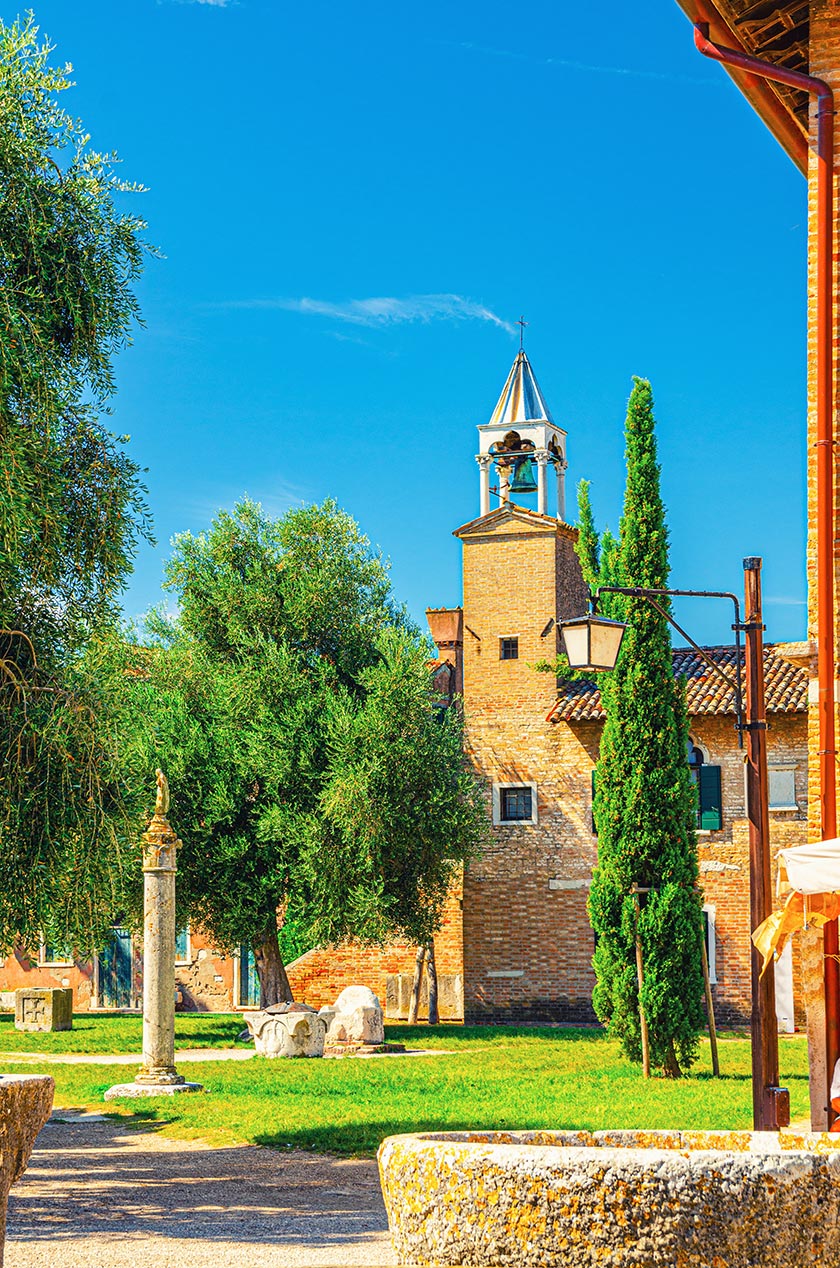
Torcello Museum
Torcello Provincial Museum, once called the Estuary Museum, preserves several Torcellian archaeological finds in the two buildings "of the archive" and "of the council", once the headquarters of the island's government. The collection consists of works and artifacts that testify the history of the lagoon, organized in two groups: the archaeological collection and the modern medieval collection. The spearheads, Egyptian statuettes, Mycenaean vases, religious canvases and angel heads in Ravenna mosaic stand out in particular.
Church of Santa Fosca
The Church of Santa Fosca is a unique architectural masterpiece in the world. In ancient times the church was the baptistery of the cathedral, it was then transformed into a martyrium (a church that houses a martyr) after the discovery of the relics of Saint Fosca and Saint Maura in a barrel in the Adriatic Sea around the year 1000. The merchant who found the barrel brought the remains to Torcello, the most important place for him at the time. The ancient baptistery was then immediately transformed into a church dedicated to the young martyr Saint Fosca, whose body was placed under the main altar together with that of her nurse, Saint Maura. The Byzantine style church, only apparently simple, is made up of the superimposition of complex shapes: an octagon at the base, a Greek cross in the center and a dome on the top.
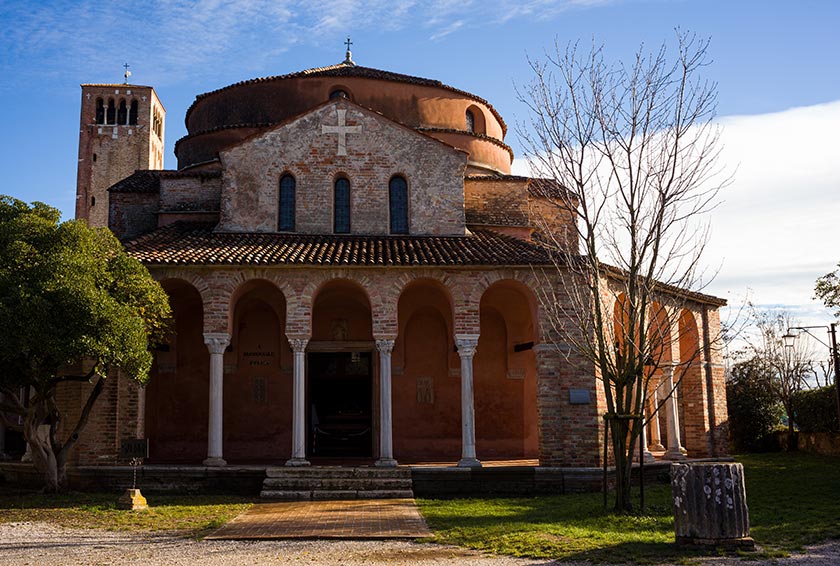
Basilica of Santa Maria Assunta
Torcello former cathedral, today the Basilica of Santa Maria Assunta, is the most important building on the island. It was a bishopric until 1818, when the figure of the Bishop of Torcello was annexed to that of the Patriarch of Venice. It is said that it was even erected by the first inhabitants of the island in 639 AD. The building as it appears today is the reconstruction of 1008. From the outside the basilica is in Byzantine style, entirely in brick, with a portico that served as a market or waiting area for the unbaptized. Attached to the portico is the ancient baptistery dating back to the year 1000, when the previous baptistery became the Church of Santa Fosca. Inside, the basilica is divided into three naves, with a polychrome marble floor and a ship hull ceiling. To make this church unique in the world, however, are the Byzantine mosaics dating back to the period of maximum splendor of the Venetian lagoon, starting from 864 AD.
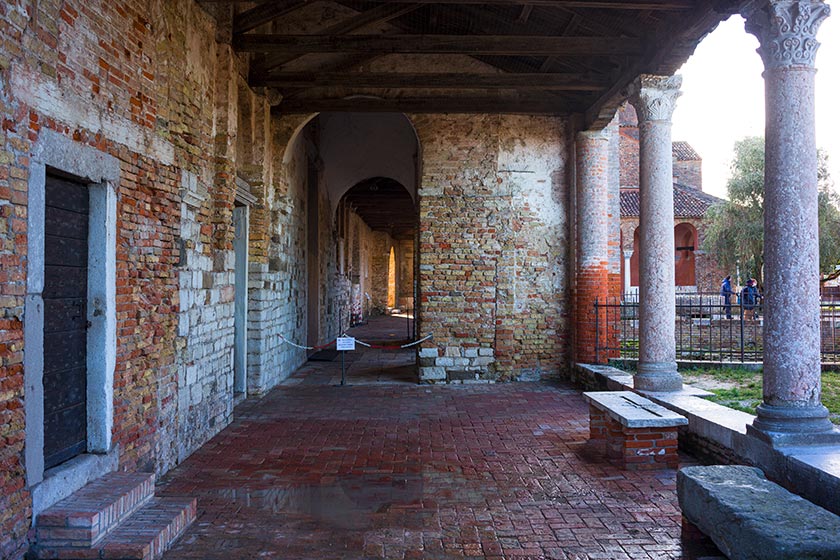
Torcello Bell Tower
The current Torcello bell tower was built in 1008. 55 meters high, it offers a 360 ° view of the lagoon and is therefore worth a visit. Furthermore, it is the only one of the 9 Torcello bell towers still surviving.
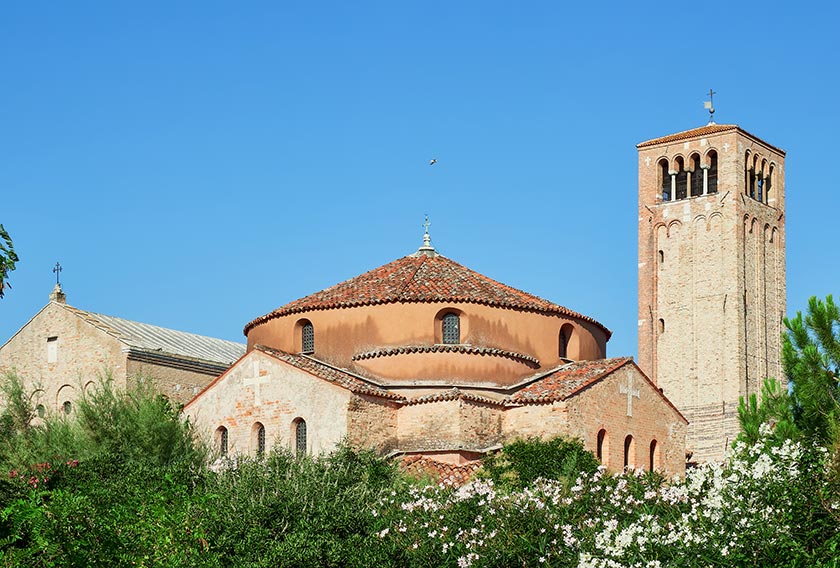
Archaeological excavations
A city that once had 25 thousand inhabitants and today only 9 is the dream of all archaeologists! Under the green space behind the church and in every square of Torcello lie buried treasures from centuries of history. Archaeological research testifies to strong commercial links between Torcello and nearby Altino, from which the goods proceeded towards the Via Annia and the Via Claudia Augusta: since its origins, in the fifth or seventh century, the island was therefore an important crossroads for the naval trade, connoting itself as a strategic port. Salt, spices, wine and other valuable products passed through these banks daily. Torcello was abandoned in 1600 and since then nature has covered shops and palaces, becoming the protector of Torcello's treasures. Still today the island is one of the most interesting excavation sites in the world.
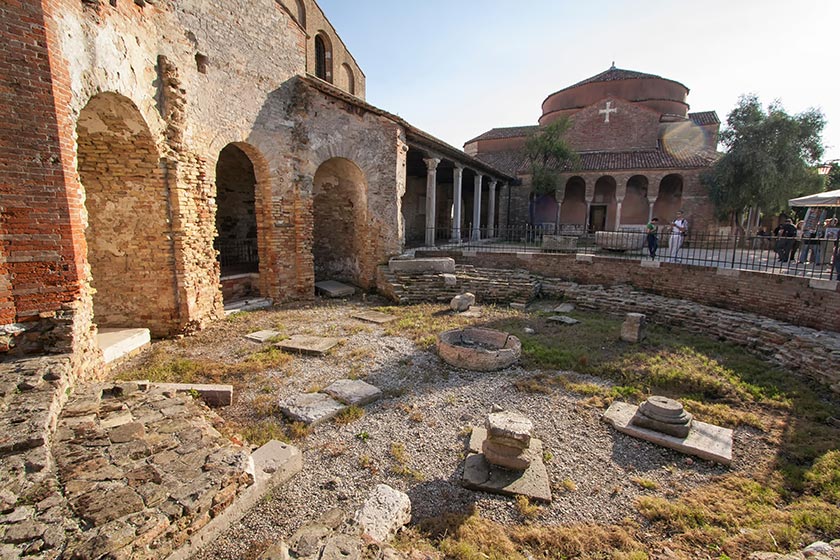
Locanda Cipriani
A tavern in Torcello had existed here since 1935: Giuseppe Cipriani took over it after the war, in 1946, fascinated by the peace of the island. At the time, people came here mainly by rowing boat and the tavern offered food and accommodation. In 1948 Ernest Hemingway stayed at Locanda Cipriani for the entire month of November, while he was completing the novel "Across the river and into the trees".
